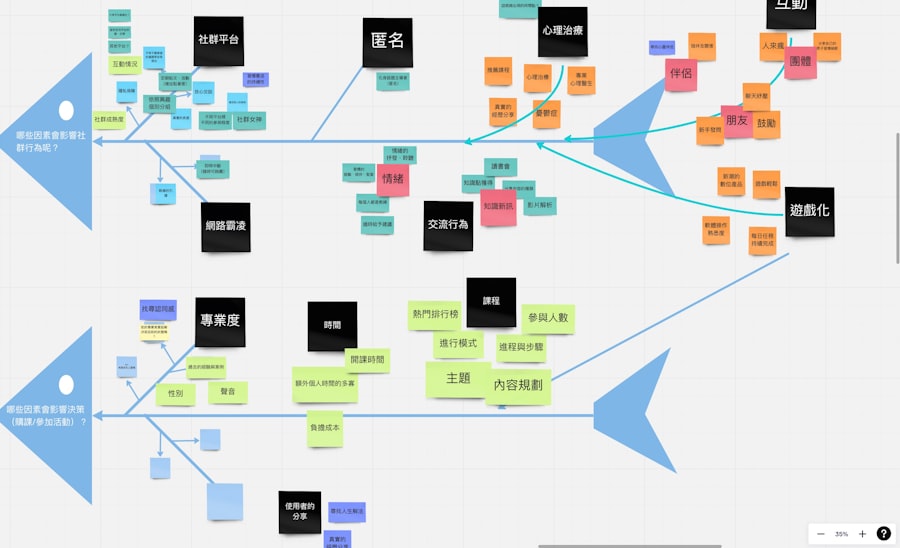In the digital landscape, the structure of a website’s content plays a pivotal role in determining its visibility and ranking on search engines. A well-organized content structure not only enhances user experience but also aids search engine crawlers in understanding the context and relevance of the information presented. When users visit a website, they expect to find information quickly and efficiently.
If the content is poorly structured, it can lead to frustration, resulting in high bounce rates and diminished user engagement. Therefore, a clear and logical content structure is essential for retaining visitors and encouraging them to explore further. Moreover, search engines like Google prioritize websites that offer a seamless user experience.
They utilize complex algorithms to assess how well a site meets user needs. A coherent content structure, characterized by clear headings, subheadings, and organized sections, allows search engines to index the site more effectively. This indexing is crucial for determining how a website ranks for specific queries.
Consequently, businesses that invest time in developing a strategic content structure are more likely to see improved search engine rankings and increased organic traffic.
Key Takeaways
- A well-structured website content is crucial for SEO as it helps search engines understand and index the site effectively.
- Analyzing user behavior and search engine algorithms is essential for creating content that meets both user needs and search engine requirements.
- Choosing the right keywords and phrases is key to optimizing content for search engines and attracting the right audience.
- Organizing content hierarchy and navigation is important for providing a seamless user experience and improving SEO.
- Utilizing header tags and meta descriptions effectively can significantly improve a website’s SEO performance.
Analyzing User Behavior and Search Engine Algorithms
Understanding user behavior is fundamental to optimizing a website for search engines. By analyzing how users interact with a site, businesses can identify patterns that inform content strategy. For instance, tracking metrics such as time spent on a page, click-through rates, and navigation paths can reveal what content resonates most with visitors.
This data can then be leveraged to refine content offerings, ensuring they align with user interests and preferences. Additionally, tools like Google Analytics provide valuable insights into user demographics and behavior, enabling businesses to tailor their content more effectively. On the other hand, search engine algorithms are constantly evolving, making it essential for businesses to stay informed about the latest trends and updates.
Search engines prioritize high-quality content that meets user intent, which means that understanding algorithm changes is crucial for maintaining visibility. By keeping abreast of these changes, businesses can adapt their strategies accordingly. For example, if an algorithm update emphasizes mobile-friendliness, companies must ensure their websites are optimized for mobile devices to avoid losing rankings.
Choosing the Right Keywords and Phrases for Content Optimization

Selecting appropriate keywords and phrases is a cornerstone of effective content optimization. Keywords serve as the bridge between what users are searching for and the content that businesses provide. Conducting thorough keyword research allows companies to identify terms that potential customers are using in their searches.
Tools like Google Keyword Planner or SEMrush can assist in uncovering high-volume keywords with manageable competition levels. By strategically incorporating these keywords into their content, businesses can enhance their chances of ranking higher in search results. However, it is not enough to simply sprinkle keywords throughout the text; they must be integrated naturally within the content.
Instead, businesses should focus on creating valuable content that addresses user queries while seamlessly incorporating relevant keywords. Long-tail keywords, which are more specific phrases that typically have lower competition, can also be beneficial in attracting targeted traffic and improving conversion rates.
Organizing Content Hierarchy and Navigation for User Experience
| Metrics | Value |
|---|---|
| Page Views | 150,000 |
| Average Time on Page | 2 minutes |
| Bounce Rate | 30% |
| Conversion Rate | 5% |
A well-organized content hierarchy is essential for guiding users through a website effectively. This involves structuring content in a way that prioritizes important information while allowing users to navigate easily between sections. A logical hierarchy typically starts with broad topics at the top level and narrows down to more specific subtopics as users delve deeper into the site.
This approach not only aids users in finding what they need but also helps search engines understand the relationship between different pieces of content. Navigation plays a critical role in this hierarchy. Clear menus, breadcrumbs, and internal links facilitate smooth transitions between pages, enhancing user experience.
When users can easily find relevant information without feeling overwhelmed or lost, they are more likely to stay on the site longer and engage with the content. Additionally, a well-structured navigation system can improve SEO by allowing search engines to crawl the site more efficiently, leading to better indexing and higher rankings.
Utilizing Header Tags and Meta Descriptions for SEO
Header tags (H1, H2, H3, etc.) are vital tools for organizing content on a webpage. They not only help break up text into manageable sections but also signal to search engines the importance of various topics within the content. The H1 tag typically represents the main title of the page and should include primary keywords to enhance SEO.
Subsequent header tags (H2, H3) can be used to denote subheadings and further categorize information, making it easier for both users and search engines to navigate the content. Meta descriptions also play a significant role in SEO by providing a brief summary of a webpage’s content in search engine results. Although they do not directly influence rankings, compelling meta descriptions can significantly impact click-through rates.
A well-crafted meta description should be concise, informative, and include relevant keywords to entice users to click on the link. By optimizing both header tags and meta descriptions, businesses can improve their visibility in search results while enhancing user engagement.
Incorporating Relevant Internal and External Links

Linking is an essential aspect of SEO that can significantly enhance a website’s authority and relevance. Internal links connect different pages within a website, guiding users to related content while helping search engines understand the site’s structure. By strategically placing internal links throughout the content, businesses can encourage visitors to explore more pages, increasing time spent on the site and reducing bounce rates.
External links, on the other hand, direct users to reputable sources outside of the website. These links can enhance credibility by demonstrating that the content is well-researched and supported by authoritative references. However, it is crucial to ensure that external links lead to high-quality sites; linking to low-quality or irrelevant sources can harm a website’s reputation.
By balancing internal and external links effectively, businesses can create a more comprehensive resource for users while boosting their SEO efforts.
Optimizing Image and Multimedia Content for Search Engines
Images and multimedia elements are integral components of web content that can enhance user engagement when used effectively. However, they must be optimized for search engines to ensure they contribute positively to SEO efforts. This involves using descriptive file names and alt attributes that accurately describe the image’s content.
Alt text not only improves accessibility for visually impaired users but also provides context for search engines when indexing images. Additionally, optimizing image size is crucial for maintaining fast loading times on a website. Large images can slow down page speed, negatively impacting user experience and SEO rankings.
By compressing images without sacrificing quality and utilizing appropriate formats (such as JPEG or PNG), businesses can ensure their multimedia content enhances rather than hinders their overall performance.
Creating Engaging and Informative Content for Users
At the heart of any successful SEO strategy lies high-quality content that engages users and provides value. Creating informative articles, blog posts, videos, or infographics that address user needs fosters trust and encourages repeat visits. Businesses should focus on understanding their target audience’s pain points and interests to develop relevant content that resonates with them.
Moreover, engaging content often encourages social sharing and backlinks from other websites, further enhancing SEO efforts. Incorporating storytelling elements or interactive features can also captivate users’ attention and keep them on the site longer. Ultimately, prioritizing user engagement through informative and entertaining content is key to building a loyal audience while improving search engine rankings.
Implementing Schema Markup for Enhanced Search Results
Schema markup is a powerful tool that helps search engines understand the context of web content more effectively. By adding structured data to a website’s code, businesses can provide additional information about their products or services that may not be immediately apparent from the text alone. This enhanced understanding allows search engines to display rich snippets in search results—such as star ratings, pricing information, or event details—which can significantly improve click-through rates.
Implementing schema markup requires some technical knowledge but can yield substantial benefits in terms of visibility and user engagement. Various types of schema markup exist for different types of content—such as articles, products, reviews, or local business information—allowing businesses to tailor their approach based on their specific offerings. By leveraging schema markup effectively, companies can stand out in search results and attract more qualified traffic.
Monitoring and Analyzing Website Performance for Continuous Improvement
Continuous improvement is essential for maintaining an effective SEO strategy over time. Regularly monitoring website performance through analytics tools allows businesses to assess how well their optimization efforts are paying off. Key performance indicators (KPIs) such as organic traffic growth, bounce rates, conversion rates, and keyword rankings provide valuable insights into what is working and what may need adjustment.
By analyzing this data regularly, businesses can identify trends or areas for improvement within their content strategy.
This iterative process ensures that websites remain relevant in an ever-changing digital landscape while maximizing their potential for success.
The Impact of Optimized Content Structure on SEO Success
In conclusion, an optimized content structure is fundamental to achieving SEO success in today’s competitive online environment. By understanding the importance of website organization, analyzing user behavior alongside search engine algorithms, choosing appropriate keywords, and implementing effective navigation strategies, businesses can create an engaging user experience that drives traffic and conversions. Furthermore, utilizing header tags, meta descriptions, internal linking strategies, multimedia optimization techniques, schema markup implementation, and continuous performance monitoring all contribute significantly to enhancing visibility in search results.
Ultimately, investing time and resources into optimizing website content structure pays off by improving search engine rankings while fostering user engagement and satisfaction. As digital landscapes continue to evolve, businesses must remain adaptable and committed to refining their strategies based on data-driven insights—ensuring they stay ahead of competitors while meeting ever-changing user expectations.
FAQs
What is website content structure for SEO?
Website content structure for SEO refers to the organization and formatting of website content in a way that is optimized for search engines. This includes using headings, subheadings, and relevant keywords to make the content more easily discoverable by search engines.
Why is website content structure important for SEO?
A well-structured website content can improve the user experience, making it easier for visitors to find the information they are looking for. Additionally, search engines use the structure of a website’s content to understand the context and relevance of the information, which can impact the website’s ranking in search results.
What are some best practices for website content structure for SEO?
Some best practices for website content structure for SEO include using descriptive and relevant headings and subheadings, incorporating relevant keywords naturally throughout the content, and organizing the content in a logical and easy-to-follow manner. It’s also important to use meta tags and descriptions to provide additional context for search engines.
How can website content structure impact SEO performance?
A well-structured website content can improve the website’s visibility in search engine results, making it more likely to be discovered by users. It can also help search engines understand the relevance and context of the content, which can impact the website’s ranking in search results. Additionally, a well-structured website content can improve the user experience, leading to higher engagement and potentially better SEO performance.

